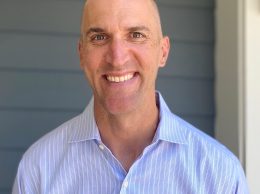The climate change accords signed in Paris this month have been a vindication of Gov. Jerry Brown’s view of a less carbon intensive economy.
That is no small accomplishment, which vindicates San Luis Obispo County’s decision to embrace “Big Solar” and efforts in Ventura County to combine industrial-scale solar with waste recycling to reduce carbon intensity.
But it’s also time to think about the longer-term impacts of public policy on the California economy. And it’s time for a more pragmatic Brown to begin making bold moves in two areas — housing and transportation.
We’re calling on the governor to abandon the idea of a heavily urbanized Central Valley and his pipe dream of an expensive “bullet train.” It is expensive, comes at a tremendous cost to agriculture and could threaten to add more carbon to the economy.
Instead, we believe the governor should focus on creating more housing in coastal communities where middle-class families are living in substandard quarters or being forced to commute hours to their jobs.
To go with the new housing, California very badly needs a mechanism to fund the infrastructure improvements necessary to make a low-carbon economy worthwhile.
Housing and infrastructure projects will require a new attitude toward development in the state’s coastal and coastal plain communities — but the governor has the ear of the urban elites thanks to his climate change efforts.
Specifically, the goals should be to:
• Reduce the price differential between high-end coastal communities and inland communities. Right now, as California Lutheran University’s CERF forecasting center reports, there is a $1 million difference between the median cost of a house in San Mateo and one in San Bernardino. That’s $1.25 million versus $250,000.
• Establish better connections between university research and local communities. Cal Poly San Luis Obispo and UC Santa Barbara have done a better than average job at this but there’s more that can be done to help spinoff companies take root in the area.
• Make it easier to get new, middle-class housing projects off the ground. Brown tried and failed to get changes to CEQA passed in the legislature this year. But with a victory in Paris under his belt, he should not be shy about giving it another try.
California can celebrate a remarkable comeback after a deep recession and a victory for its climate friendly laws. But while elites in major cities are cheering, plenty of young professionals and mid-rank managers are falling behind.
Cyber threats here to stay
Getting cyber threats right might be the biggest security challenge for the country right now.
In Los Angeles, school officials got it wrong when they shut the schools based on a threat delivered by email.
But just as wrong were federal officials when they greenlighted a marriage visa to San Bernardino shooter Tashfeen Malik despite postings on social media that indicated she might have been radicalized.
Given the rapidly changing nature of digital communications and the ever-evolving threat profile, there is no magic formula for striking the right balance.






 Print
Print Email
Email

















